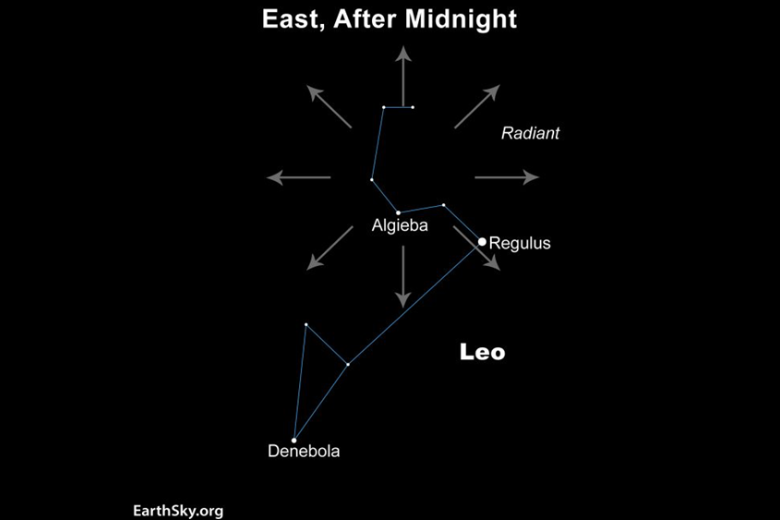Keep an eye out on Sunday and Monday nights because from midnight into the pre-dawn hours, the annual Leonid Meteor Shower is expected to peak.
Are you a night owl or an early riser who likes to look at the night sky? Keep an eye out on Sunday and Monday nights because from midnight into the pre-dawn hours, the annual Leonid meteor shower is expected to peak.
Expect prime viewing conditions for the meteor shower. The waning crescent moon will be slender and shouldn’t interfere. Plus, DC’s weather is poised to offer clear skies both nights.
The Leonids were first seen in 902 A.D. and “storm” every 33 years, producing hundreds to thousands of meteors an hour. The last Leonid storm was in 2001. This year, a dark sky site should produce 10 to 15 Leonid meteors an hour and the moon will have set so it won’t be a light source.
Each year at this time, our planet encounters a debris stream of cometary particles made by Comet Temple-Tuttle as it orbits the sun. As Earth moves in its orbit around the sun, it collides with this debris stream and the particles hit our atmosphere at 45 miles per second (about 155,000 miles per hour!) to become “shooting or falling stars.” Earth encounters about a dozen major meteor showers a year.
To watch the Leonids, find a dark sky location that is away from lights and obstructions, such as trees and buildings. This will give you the greatest chance to see the peak of 10-15 meteors an hour. If you are a city dweller, you still may see the brightest Leonids as long as you are not staring into a street light, or nestled in among tall buildings. Out in the country or along the beach is the best place to be.
You do not need any equipment or know-how to enjoy this meteor sky show. Just find a place where you can put a lounge chair or blanket to see the sky toward the east and overhead. Starting after midnight, when the constellation Leo the Lion is starting to rise above the horizon, look toward the east. A meteor that is part of the shower can be traced back to the constellation Leo, which will be completely above the Eastern horizon a little after 1 a.m.
As the night wears on, Leo will rise higher in the sky and move toward the west due to Earth’s rotation. The Leonids can appear anywhere in the sky, but looking at least halfway up while facing the east gives you the widest viewing area.
Sporadic meteors that are not part of the shower can normally be seen during the night as well.
Enjoy the shower with family, friends or your significant other. Some music, food and beverages are an added plus. And try your luck at photographing the Leonid and other meteor showers. It is pretty easy, but requires some kind of camera and tripod.
Fingers crossed for Leonids aplenty…
Follow my daily blog to keep up with the latest news in astronomy and space exploration. You can email me at skyguyinva@gmail.com.
Get breaking news and daily headlines delivered to your email inbox by signing up here.
© 2025 WTOP. All Rights Reserved. This website is not intended for users located within the European Economic Area.
